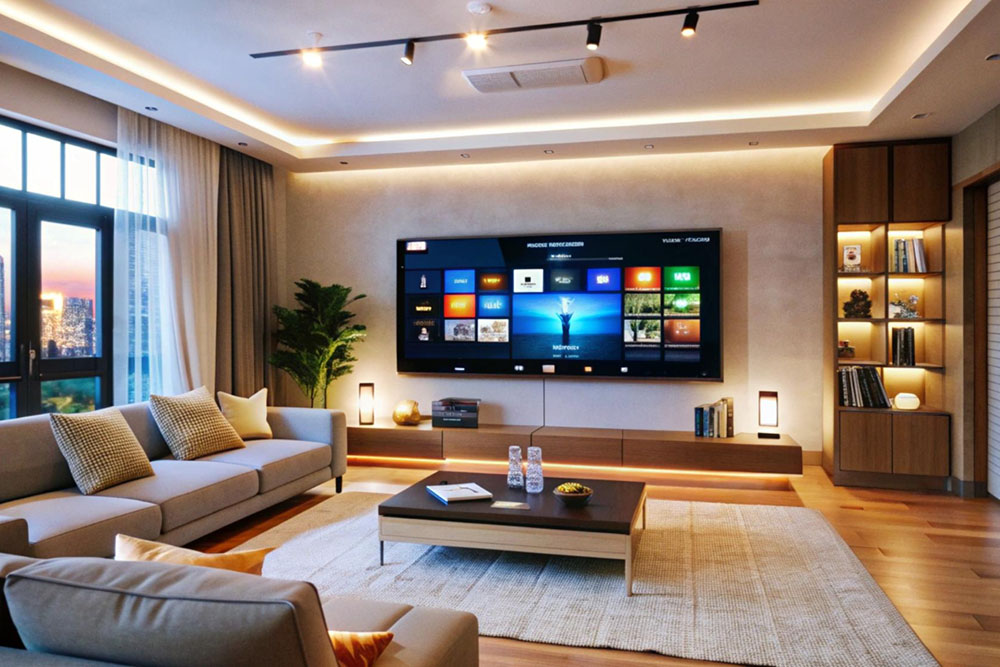Top Things to Consider When Designing a Home Theater

Designing a home theater can transform your entertainment experience, offering cinematic bliss right in the comfort of your living room. But as with any major home improvement project, careful planning is crucial. This guide will walk you through the top considerations when designing a home theater, ensuring your setup delivers on both functionality and style.
Choosing the Right Space
Assess Your Room Size and Shape
Your first task is to select the perfect spot for your home theater. Whether you have a spare room or an unused basement, the size and shape of the space can significantly influence your design choices. Consider:
- Room Dimensions: Larger rooms can accommodate more seating and bigger screens, but smaller spaces can also be ideal for cozy setups.
- Shape: Rectangular rooms are often best for sound acoustics, while oddly shaped rooms might require more customization.
Soundproofing and Acoustics
Great sound is integral to the theater experience. To prevent noise from leaking out and to control sound quality inside:
- Soundproofing: Install soundproofing materials like acoustic panels or heavy drapes on walls and windows.
- Acoustic Treatments: Use bass traps and diffusers to manage sound reflections and enhance audio clarity.
Visual Display and Screen Selection
Screen Size and Type
Your screen is the centerpiece of your home theater, so choose wisely:
- Size: Bigger isn’t always better. Screen size should be proportional to the distance from the seating area.
- Type: Decide between a projector and screen setup or a large 4K TV. Projectors offer a more authentic theater feel, while TVs are often easier to set up.
Screen Placement
Optimal placement ensures everyone gets the best view:
- Height: The center of the screen should be at eye level from the seating position.
- Distance: Follow the 1.5 to 2.5 times rule—your seating should be 1.5 to 2.5 times the diagonal size of the screen away.
Audio System Setup
Choosing Your Sound System
The audio system brings the visuals to life:
- Surround Sound: Aim for at least a 5.1 system, which includes five speakers and one subwoofer. For true immersion, consider a 7.1 or Dolby Atmos setup.
- Soundbar: A soundbar can be a simpler, less expensive option, especially in smaller spaces.
Speaker Placement
Strategic placement maximizes sound quality:
- Front Speakers: Place left and right speakers at an equal distance from the screen, angled towards the audience.
- Surround Speakers: Position behind and slightly above the seating area for enveloping sound.
- Subwoofer: Experiment with placement to find the best bass response, usually near a wall or corner.
Lighting Considerations
Ambient and Task Lighting
Proper lighting sets the mood:
- Ambient Lighting: Use dimmable lights to create a soft, inviting atmosphere without glare.
- Task Lighting: Consider LED strips along walkways or beneath seating for visibility.
Light Control
For the best viewing experience, control external light sources:
- Blackout Curtains: Block outside light to prevent reflections and maintain picture clarity.
- Smart Lighting: Integrate smart lighting systems to adjust settings with a voice command or smartphone app.
Furniture and Seating Arrangement
Seating Options
Choose comfort and style:
- Recliners: Theater-style recliners offer premium comfort.
- Sectionals: For a more relaxed, social setting, consider a sectional sofa.
- Floor Seating: Bean bags or floor cushions can provide additional, informal seating.
Layout
Your seating arrangement affects sightlines and sound:
- Rows: If space allows, tiered seating helps ensure everyone has a clear view.
- Spacing: Allow enough room for comfortable movement between seats.
Technology Integration
Smart Home Connectivity
Integrate your home theater into your smart home system for convenience:
- Voice Control: Use devices like Amazon Echo or Google Home to control lighting, curtains, and even your AV equipment.
- Automation: Set scenes that automatically adjust lighting, start your projector, and cue up your favorite movie.
Wiring and Cable Management
Keep your installation tidy and safe:
- Concealment: Use cable raceways or in-wall conduits to hide cables.
- Organization: Label cables and use velcro ties to keep things neat.
Budget and Planning
Setting a Budget
Balance quality and cost:
- Prioritize: Decide which features are must-haves and where you can save.
- Research: Compare prices online and in-store for all components before making purchases.
Hiring Professionals
Consider professional help for complex tasks:
- Consultants: Hire a home theater consultant for expert advice tailored to your space.
- Installers: Professional installers can handle wiring, soundproofing, and equipment setup.
Conclusion
Designing a home theater involves numerous decisions, from technical specifications to aesthetic touches. By focusing on the key elements of your space, visual and audio components, lighting, seating, technology, and budget, you can create a personal cinema that rivals your favorite theater.
Ready to take the plunge into creating your dream home theater? If you're planning on a home theater installation in Central Florida, contact Axiom Integration today to get your free quote. Our team of experts will ensure your project is both seamless and spectacular.